Pain is part of the game and even something you may purposefully seek out: Enduring pain – when training in the gym or when dieting down to subhuman levels of body fat – is part and parcel of competitive bodybuilding. By embracing this pain, it’s easy to become so familiar with it that one seemingly forgets that pain, especially joint pain, in and of itself is not the goal. In fact, joint pain can severely hamper your gains if you can’t train properly.
Undenatured Collagen as UCII® (40mg)
Because the cartilage that allows our joints to articulate freely is largely composed of collagen, specifically of the type II form4-8, it’s not surprising that common joint inflammation [a.k.a. (osteo)arthritis] reflects proper upkeep of this important protein9. Healthy inflammatory responses are a function of the immune system, of course, which has the formidable task of surveilling the body’s own proteins, those derived from symbiotic bacteria (in the microbiome), as well as those we’ve consumed10,11.
Consuming type II collagen in it’s undenatured form (not broken down in any way) confers immuno-tolerance10 as it passes through the gut’s “immuno-check points” called Peyer’s patches12], informing the immune system that type II collagen is not pathogenic. (This is a good thing!) In both humans13,14 and animals15-18 with arthritis, consuming undenatured collagen orally reduces arthritic symptoms, whereas direct injection of type II collagen (bypassing the Peyer’s patches) can trigger immunoreactive arthritis19,20.
In horses18 and dogs15,17, only very small doses of UC-II® undenatured type II collagen is enough to alleviate osteoarthritis. In a study of human subjects with pre-existing knee osteoarthritis of the knee and for whom a glucosamine / chondroitin combo was not effective, consuming UC-II® (40mg / day) for 90 days reduced knee pain and improved several indices of physical function during daily life (e.g., when walking and climbing stairs)21.
More impressively, UC-II may improve joint function even when you’re not aware you have joint issues! In healthy individuals neither complaining of knee pain nor meeting diagnostic criteria for knee arthritis, 120 days of UC- II® (40mg / day) increased joint range of motion and extended the exercise time on a stepmill before reporting knee pain22. Additionally, those with osteoarthritis who already use an NSAID like acetominophen (brand name Tylenol®) may find that undenatured collagen Type II has an additive effect in relieving symptoms23 that comes without side effects24.
Curcumin C3 Complex® (500mg)
Exercise in general (barring an injury, of course) is good for the joints, but most of you know full well that heavy lifting can inflame your joints and eventually take its toll25,26. Curcumin C3 Complex® was designed specifically to both neutralize and prevent the formation of free radicals27, known to play a role in arthrtitis28-31.
While animal research supports Curcumin C3 Complex®’ anti-arthritic effect32, only large doses Curcumin C3 Complex® will substantially elevate blood levels33,34. For this reasons we’ve added Bioperine® (2.5mg; see below) to ensure bioavailability2,35 and that Curcumin C3 Complex® can thus inhibit of prostaglandin formation36 [which is also the mechanism of action of non-steroidal anti-inflammatory pain-killers like aspirin37].
With the 500mg of Curcumin C3 Complex® (plus 2.5mg of Bioperine®) in each dose of Joint Care, we’ve got you going in the right direction to take full advantage of the joint pain-alleviating effects of Curcumin C3 Complex®. When 1500mg / day (500mg of Curcumin C3 Complex® plus 5mg of Bioperine, three times per day) was given to mild-to-moderate sufferers of knee osteoarthritis, all measures of joint pain and physical function improved compared to placebo, and more than 80% of those all those taking Curcumin C3 Complex® voluntarily reduced their use of non-steroidal anti- inflammatories38.
Interestingly, in this study39, unlike others where subjects have metabolic syndrome40,41, Curcumin C3 Complex® did not reduce systemic inflammatory markers. This suggests that Curcumin C3 Complex®’ effects in limiting oxidative stress is the key here41,42, or possibly even it’s ability to inhibit cyclooxygenase and thus prostaglandin synthesis36,43-46 may be underlying it’s efficacy.
For those who might already be using Tylenol (acetominophen) for joint pain, preliminary evidence suggests that curcuminoids like those found in C3 complex do not interfere with acetaminophen metabolism47.
Bioperine® (2.5mg)
When it comes to many dietary supplements, bioavailabilty (absorption) is the name of the game. To enhance the availability of Curcumin C3 Complex® (see above), Joint Care contains 2.5mg of Bioperine®, a black pepper extract containing 95+% piperine. By inhibiting p-glycoprotein’s actions48 and preventing glucoronidation in the gut49, piperine diminishes the intestinal barrier for many substances50 and makes them more lipid soluble (and thus able to traverse lipid membranes). Indeed, piperine has a good record of increasing bioavailability of drugs and supplements48, including of course curcumin2,35, as well as beta-carotene51, resveratrol52, iron53, selenium54 and CoQ1055.
Disclaimer
Piperine may interact with drug metabolism48. The above statements have not been evaluated by the Food and Drug Administration. This product is not intended to diagnose, treat, cure, or prevent any disease.
1. Pirsig RM. Zen and the art of motorcycle maintenance: an inquiry into values. New York,: Morrow; 1974.
2. Prasad S, Tyagi AK, Aggarwal BB. Recent Developments in Delivery, Bioavailability, Absorption and Metabolism of Curcumin: the Golden Pigment from Golden Spice. Cancer Research and Treatment : Official Journal of Korean Cancer Association. 2014;46(1):2-18.
3. Shaikh J, Ankola DD, Beniwal V, Singh D, Kumar MN. Nanoparticle encapsulation improves oral bioavailability of curcumin by at least 9-fold when compared to curcumin administered with piperine as absorption enhancer. Eur J Pharm Sci. 2009;37(3-4):223-230.
4. Muir H, Bullough P, Maroudas A. The distribution of collagen in human articular cartilage with some of its physiological implications. The Journal of bone and joint surgery. British volume. 1970;52(3):554-563.
5. Yoo TJ, Tomoda K. Type II collagen distribution in rodents. Laryngoscope. 1988;98(11):1255-1260.
6. Gay S, Muller PK, Lemmen C, Remberger K, Matzen K, Kuhn K. Immunohistological study on collagen in cartilage-bone metamorphosis and degenerative osteoarthrosis. Klin Wochenschr. 1976;54(20):969-976.
7. Nerlich AG, Wiest I, von der Mark K. Immunohistochemical analysis of interstitial collagens in cartilage of different stages of osteoarthrosis. Virchows Archiv. B, Cell pathology including molecular pathology. 1993;63(4):249-255.
8. Aldahmash AM, El Fouhil AF, Mohamed RA, et al. Collagen types I and II distribution: a relevant indicator for the functional properties of articular cartilage in immobilised and remobilised rabbit knee joints. Folia Morphologica. 2015;74(2):169-175.
9. Garnero P, Ayral X, Rousseau JC, et al. Uncoupling of type II collagen synthesis and degradation predicts progression of joint damage in patients with knee osteoarthritis. Arthritis & Rheumatology. 2002;46(10):2613-2624.
10. Park KS, Park MJ, Cho ML, et al. Type II collagen oral tolerance; mechanism and role in collagen-induced arthritis and rheumatoid arthritis. Modern rheumatology. 2009;19(6):581-589.
11. Guyton AC. Textbook of medical physiology. 8th ed. Philadelphia: Saunders; 1991.
12. Bagchi D, Misner B, Bagchi M, et al. Effects of orally administered undenatured type II collagen against arthritic inflammatory diseases: a mechanistic exploration. International journal of clinical pharmacology research. 2002;22(3-4):101-110.
13. Yoshinari O, Moriyama H, Shiojima Y. An overview of a novel, water-soluble undenatured type II collagen (NEXT-II). J Am Coll Nutr. 2015;34(3):255-262.
14. Yoshinari O, Moriyama H, Shiojima Y, Miyawaki H. Evaluation of Efficacy and Safety of NEXT-II®, a Novel Water-Soluble, Undenatured Type II Collagen in Subjects with Potential Risks in the Knee Joint Health from Healthy Population. Functional Foods in Health and Disease. 2015;5(7):251-264.
15. Gupta RC, Canerdy TD, Lindley J, et al. Comparative therapeutic efficacy and safety of type-II collagen (UC-II), glucosamine and chondroitin in arthritic dogs: pain evaluation by ground force plate. J Anim Physiol Anim Nutr (Berl). 2012;96(5):770-777.
16. Di Cesare Mannelli L, Micheli L, Zanardelli M, Ghelardini C. Low dose native type II collagen prevents pain in a rat osteoarthritis model. BMC Musculoskeletal Disorders. 2013;14:228-228.
17. Deparle LA, Gupta RC, Canerdy TD, et al. Efficacy and safety of glycosylated undenatured type-II collagen (UC-II) in therapy of arthritic dogs. J Vet Pharmacol Ther. 2005;28(4):385-390.
18. Gupta RC, Canerdy TD, Skaggs P, et al. Therapeutic efficacy of undenatured type-II collagen (UC-II) in comparison to glucosamine and chondroitin in arthritic horses. J Vet Pharmacol Ther. 2009;32(6):577-584.
19. Corthay A, Backlund J, Broddefalk J, et al. Epitope glycosylation plays a critical role for T cell recognition of type II collagen in collagen-induced arthritis. Eur J Immunol. 1998;28(8):2580-2590.
20. Trentham DE, Townes AS, Kang AH. Autoimmunity to type II collagen an experimental model of arthritis. J Exp Med. 1977;146(3):857-868.
21. Crowley DC, Lau FC, Sharma P, et al. Safety and efficacy of undenatured type II collagen in the treatment of osteoarthritis of the knee: a clinical trial. International journal of medical sciences. 2009;6(6):312-321.
22. Lugo JP, Saiyed ZM, Lau FC, et al. Undenatured type II collagen (UC-II(R)) for joint support: a randomized, double-blind, placebo-controlled study in healthy volunteers. J Int Soc Sports Nutr. 2013;10(1):48.
23. Bakilan F, Armagan O, Ozgen M, Tascioglu F, Bolluk O, Alatas O. Effects of Native Type II Collagen Treatment on Knee Osteoarthritis: A Randomized Controlled Trial. The Eurasian journal of medicine. 2016;48(2):95-101.
24. Barnett ML, Kremer JM, St Clair EW, et al. Treatment of rheumatoid arthritis with oral type II collagen. Results of a multicenter, double-blind, placebo- controlled trial. Arthritis and rheumatism. 1998;41(2):290-297.
25. Hunter DJ, Eckstein F. Exercise and osteoarthritis. J Anat. 2009;214(2):197- 207.
26. Kujala UM, Kettunen J, Paananen H, et al. Knee osteoarthritis in former runners, soccer players, weight lifters, and shooters. Arthritis and rheumatism. 1995;38(4):539-546.
27. Majeed M, Badmaev V, Rajendran R. Bioprotectant composition, method of use and extraction process of curcuminoids. Google Patents; 1999.
28. Amin AR, Abramson SB. The role of nitric oxide in articular cartilage breakdown in osteoarthritis. Curr Opin Rheumatol. 1998;10(3):263-268.
29. Rosen GM, Tsai P, Pou S. Mechanism of free-radical generation by nitric oxide synthase. Chemical reviews. 2002;102(4):1191-1200.
30. Abramson SB. Osteoarthritis and nitric oxide. Osteoarthritis and Cartilage. 2008;16(Supplement 2):S15-S20.
31. Mantle D, Falkous G, Walker D. Quantification of protease activities in synovial fluid from rheumatoid and osteoarthritis cases: comparison with antioxidant and free radical damage markers. Clin Chim Acta. 1999;284(1):45-58.
32. Kamarudin TA, Othman F, Mohd Ramli ES, Md Isa N, Das S. Protective effect of curcumin on experimentally induced arthritic rats: detailed histopathological study of the joints and white blood cell count. EXCLI Journal. 2012;11:226-236.
33. Garcea G, Jones DJ, Singh R, et al. Detection of curcumin and its metabolites in hepatic tissue and portal blood of patients following oral administration. Br J Cancer. 2004;90(5):1011-1015.
34. Lao CD, Ruffin MTt, Normolle D, et al. Dose escalation of a curcuminoid formulation. BMC complementary and alternative medicine. 2006;6:10.
35. Shoba G, Joy D, Joseph T, Majeed M, Rajendran R, Srinivas PS. Influence of piperine on the pharmacokinetics of curcumin in animals and human volunteers. Planta Med. 1998;64(4):353-356.
36. Sharma RA, Euden SA, Platton SL, et al. Phase I clinical trial of oral curcumin: biomarkers of systemic activity and compliance. Clin Cancer Res. 2004;10(20):6847-6854.
37. Rao P, Knaus EE. Evolution of nonsteroidal anti-inflammatory drugs (NSAIDs): cyclooxygenase (COX) inhibition and beyond. J Pharm Pharm Sci. 2008;11(2):81s-110s.
38. Panahi Y, Rahimnia AR, Sharafi M, Alishiri G, Saburi A, Sahebkar A. Curcuminoid treatment for knee osteoarthritis: a randomized double-blind placebo-controlled trial. Phytother Res. 2014;28(11):1625-1631.
39. Rahimnia AR, Panahi Y, Alishiri G, Sharafi M, Sahebkar A. Impact of Supplementation with Curcuminoids on Systemic Inflammation in Patients with Knee Osteoarthritis: Findings from a Randomized Double-Blind Placebo-Controlled Trial. Drug research. 2015;65(10):521-525.
40. Panahi Y, Hosseini MS, Khalili N, et al. Effects of curcumin on serum cytokine concentrations in subjects with metabolic syndrome: A post-hoc analysis of a randomized controlled trial. Biomedicine & pharmacotherapy = Biomedecine & pharmacotherapie. 2016;82:578-582.
41. Panahi Y, Hosseini MS, Khalili N, Naimi E, Majeed M, Sahebkar A. Antioxidant and anti-inflammatory effects of curcuminoid-piperine combination in subjects with metabolic syndrome: A randomized controlled trial and an updated meta-analysis. Clin Nutr. 2015;34(6):1101-1108.
42. Panahi Y, Alishiri GH, Parvin S, Sahebkar A. Mitigation of Systemic Oxidative Stress by Curcuminoids in Osteoarthritis: Results of a Randomized Controlled Trial. Journal of dietary supplements. 2016;13(2):209-220.
43. Hong J, Bose M, Ju J, et al. Modulation of arachidonic acid metabolism by curcumin and related beta-diketone derivatives: effects on cytosolic phospholipase A(2), cyclooxygenases and 5-lipoxygenase. Carcinogenesis. 2004;25(9):1671-1679.
44. Goel A, Boland CR, Chauhan DP. Specific inhibition of cyclooxygenase-2 (COX- 2) expression by dietary curcumin in HT-29 human colon cancer cells. Cancer letters. 2001;172(2):111-118.
45. Zhang F, Altorki NK, Mestre JR, Subbaramaiah K, Dannenberg AJ. Curcumin inhibits cyclooxygenase-2 transcription in bile acid- and phorbol ester- treated human gastrointestinal epithelial cells. Carcinogenesis. 1999;20(3):445-451.
46. Handler N, Jaeger W, Puschacher H, Leisser K, Erker T. Synthesis of novel curcumin analogues and their evaluation as selective cyclooxygenase-1 (COX- 1) inhibitors. Chem Pharm Bull (Tokyo). 2007;55(1):64-71.
47. Volak LP, Hanley MJ, Masse G, et al. Effect of a herbal extract containing curcumin and piperine on midazolam, flurbiprofen and paracetamol (acetaminophen) pharmacokinetics in healthy volunteers. Br J Clin Pharmacol. 2013;75(2):450-462.
48. Han Y, Chin Tan TM, Lim L-Y. In vitro and in vivo evaluation of the effects of piperine on P-gp function and expression. Toxicol Appl Pharmacol. 2008;230(3):283-289.
49. Singh J, Dubey RK, Atal CK. Piperine-mediated inhibition of glucuronidation activity in isolated epithelial cells of the guinea-pig small intestine: evidence that piperine lowers the endogeneous UDP-glucuronic acid content. J Pharmacol Exp Ther. 1986;236(2):488-493.
50. Deferme S, Augustijns P. The effect of food components on the absorption of P-gp substrates: a review. J Pharm Pharmacol. 2003;55(2):153-162.
51. Badmaev V, Majeed M, Norkus EP. Piperine, an alkaloid derived from black pepper increases serum response of beta-carotene during 14-days of oral beta-carotene supplementation. Nutr Res. 1999;19(3):381-388.
52. Johnson JJ, Nihal M, Siddiqui IA, et al. Enhancing the bioavailability of resveratrol by combining it with piperine. Mol Nutr Food Res. 2011;55(8):1169-1176.
53. Vuppala KK. An Evaluation of Bioavailability Enhancement of Organic Elemental Iron with BioPerine® in Rabbits. International Journal of Pharmacy and Pharmaceutical Research 2016;5(4):72-79.
54. Badmaev V, Majeed M. Selenium: a quest for better understanding. Alternative Therapies. 1996;4(2):59-66.
55. Badmaev V, Majeed M, Prakash L. Piperine derived from black pepper increases the plasma levels of coenzyme Q10 following oral supplementation. J Nutr Biochem. 2000;11(2):109-113.
Keep out of reach of children. This product is only intended to be consumed by persons 18 years of age or older. Pregnant or nursing women should not use this product. Consult with your physician prior to use.
These statements have not been evaluated by the Food and Drug Administration. This product is not intended to diagnose, treat, cure or prevent any disease.
California Residents: Click here for Proposition 65 Warning
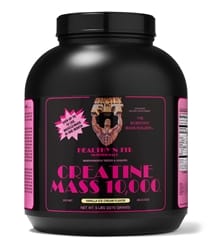
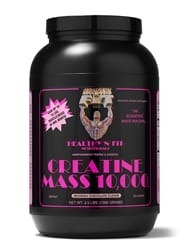
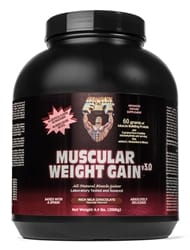
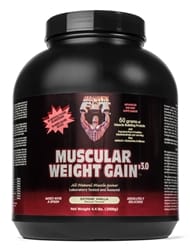
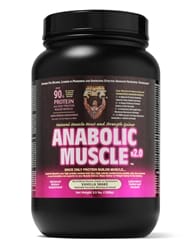
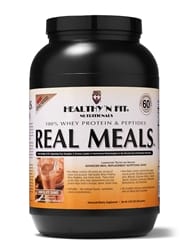
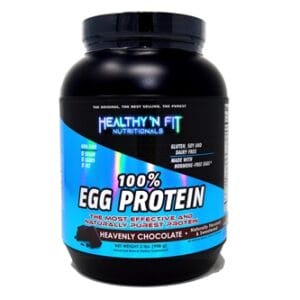
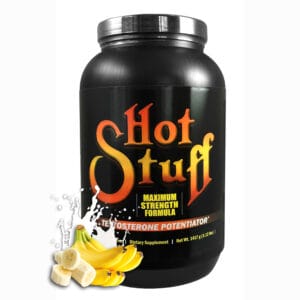
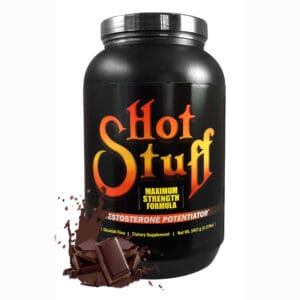
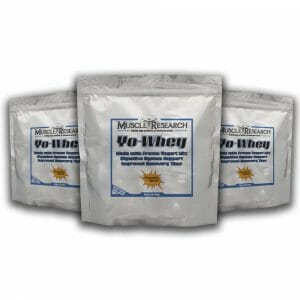
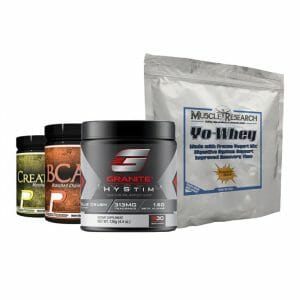
Reviews
There are no reviews yet